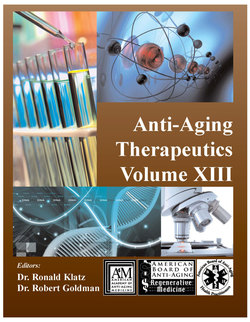Читать книгу Anti-Aging Therapeutics Volume XIII - A4M American Academy - Страница 49
На сайте Литреса книга снята с продажи.
Resveratrol as an Antimicrobial
ОглавлениеA primary function of phytoalexins is protection against environmental pathogens. For this reason, they may possess broad-spectrum antibacterial, antiviral, and antifungal properties, as is the case with resveratrol. In particular, resveratrol has been shown to inhibit proliferation of common bacteria and fungi on the skin, similar to the putative role it plays in grape skins. Additional targets are Streptomyces mutans, which contributes to dental disease, and Helicobacter pylori, which is associated with peptic ulcer disease. Isolated resveratrol is less effective than whole wine against Salmonella species and Escherichia coli, though it does possess a degree of activity independent of alcohol and other wine constituents.
For millennia, wine served as an important antibacterial, most especially on sea voyages and military campaigns, but its antiviral properties have not been studied until recently. An important clue comes from epidemiologic evidence that red wine drinkers have fewer and less severe colds, as compared to nondrinkers, and the benefit is greater with red than with white wine. Resveratrol has been demonstrated to have anti-rhinoviral activity in vitro, providing a plausible cause-effect explanation for the effect. A more dramatic finding comes from a mouse model of influenza type A, in which an LD50 dose (average inoculum required to produce 50% mortality in the test population) could be improved to 100% survival with the concurrent administration of resveratrol.14 It should be noted that quercetin also has a significant inhibitory effect on viral replication, so there may be synergies between the various wine phenolics in terms of antiviral activity.
